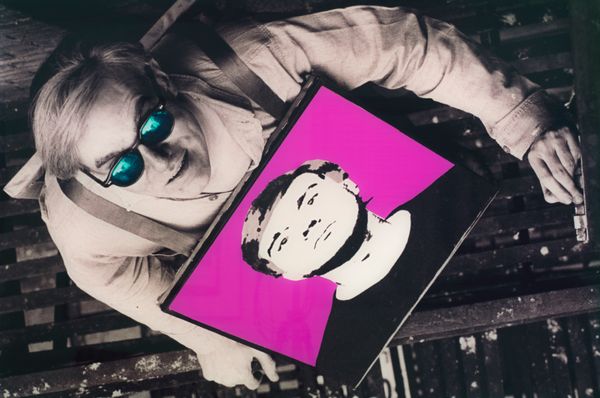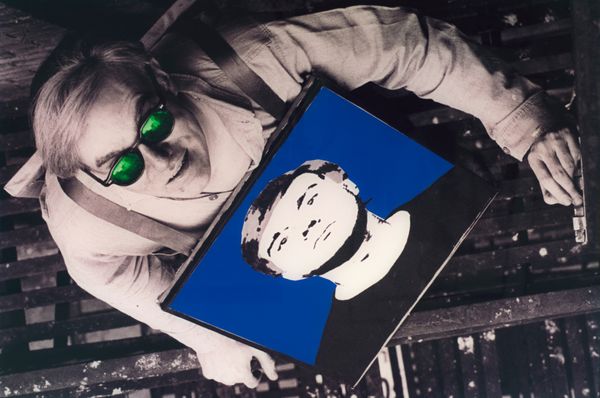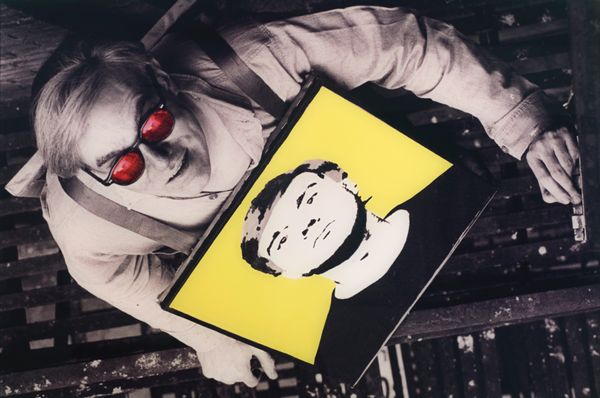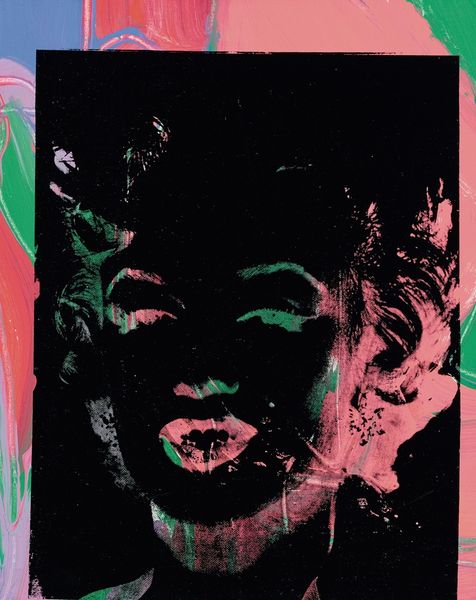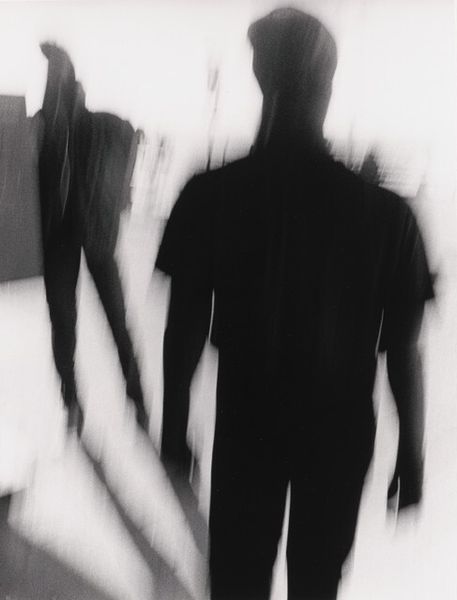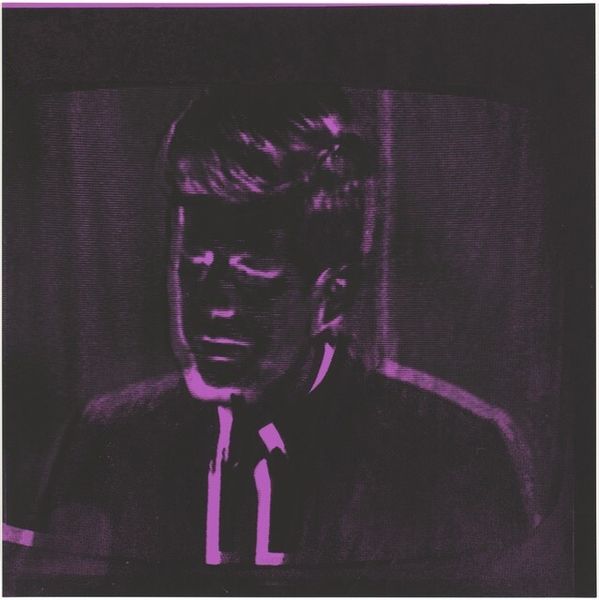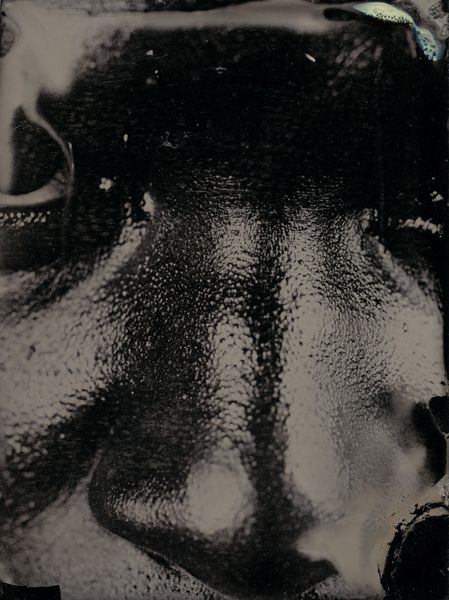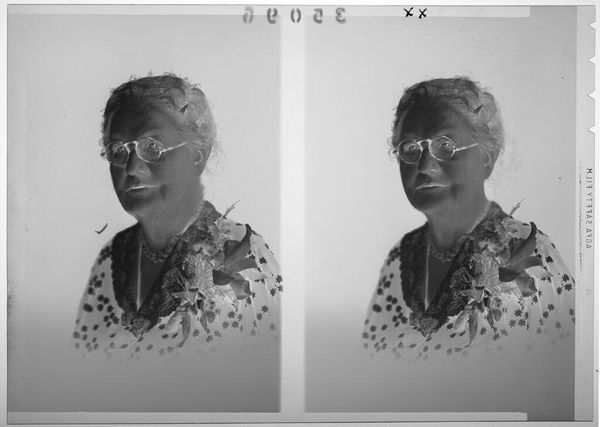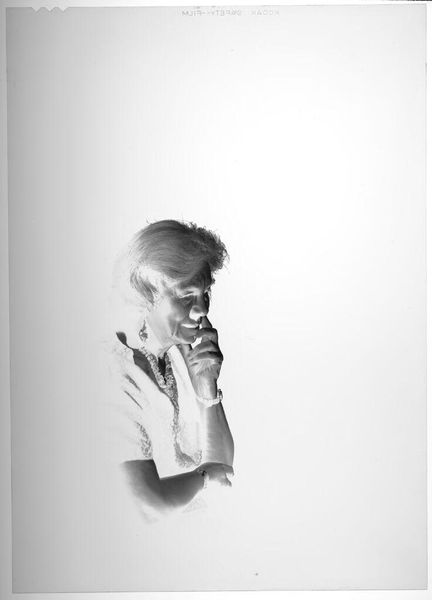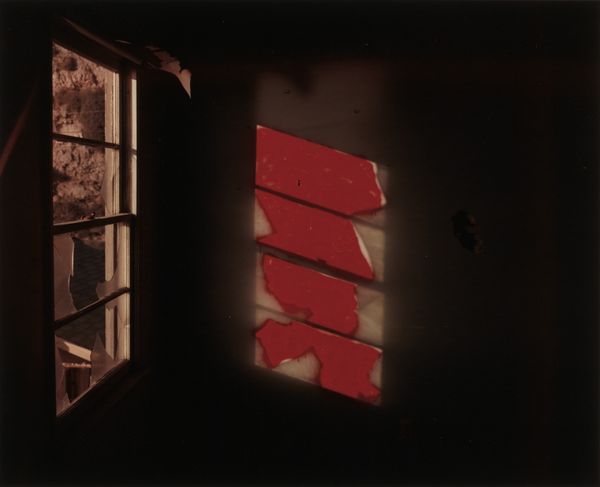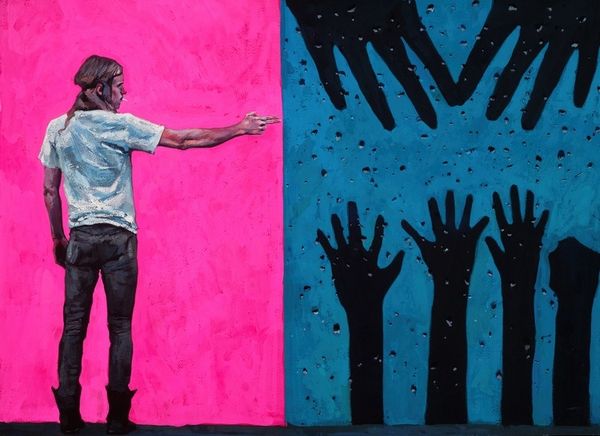
Curator: Let’s discuss William John Kennedy’s intriguing artwork, "Colour Experiment 5," currently held at The Art Flat. My first thought is that the work oozes layers; I immediately want to decode its placement behind what seems to be bars, perhaps commenting on boundaries. Editor: The texture immediately grabs me. There is something so tactile in the reproduction quality that reminds me of an industrial process-- perhaps photographic or screen printing? I want to examine the labor required. Curator: Agreed, and consider the multiple portraits themselves as sites of cultural and historical narratives. The silkscreened images are layered with references to Warhol, stardom and how queerness intersected art history. What social forces produced such art stars, and why do they continue to capture us? Editor: Let's not lose sight of the materials though. It appears we have layers of printmaking on varied media–a stark contrast in processes from photography to vibrant silkscreen. This suggests that the work might also consider how different materials contribute to our perception. Curator: Absolutely. In its visual density, I feel Kennedy plays on consumerism—much like Warhol. Kennedy perhaps critiques commodification in art. Who does this imagery serve, what identities does it uplift, and whose does it overshadow? Editor: The seriality certainly alludes to the mechanical production and reproduction typical of Warhol’s era. Yet I keep coming back to what these layers and their relationships imply: What is Kennedy communicating by physically combining these layers? Are the layers also acting as strata or an archaeological unearthing of cultural identities? Curator: I love how you brought in the concept of excavation. Each layer does offer a lens to critique art's role and reflect our image-saturated lives through identities like Warhol’s. Editor: Kennedy's layering invites us to not only consider its immediate impact, but also its construction and material implications. Curator: Examining art through the combined lenses of identity and labor deepens my appreciation, unveiling stories about power, representation, and ultimately, who gets seen and remembered.
